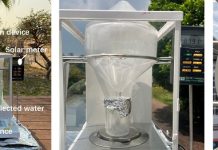
Have you ever raced across a hot beach and noticed how warm the sand gets?
That simple experience hints at a powerful idea that could change how we store energy.
Researchers are now looking at heated sand as a promising solution to store energy for the future.
Unlike the batteries we usually think of for storing energy, this method offers a new and potentially game-changing approach.
Batteries are great for storing energy for a short time, but we need something more for long-term storage. That’s where technologies like thermal energy storage (TES) come in.
TES isn’t limited by location like pumped storage hydropower, which needs reservoirs at different elevations. Instead, it can use materials like molten salt or even superheated rocks – and now, sand.
Sand is pretty much everywhere, making it an accessible and environmentally friendly option for storing energy.
Researchers at the National Renewable Energy Laboratory (NREL) have developed a technology that heats sand using renewable energy sources such as wind and solar power.
This hot sand is then stored in a silo and can be used later to generate electricity or provide heat for industrial processes.
Their tests have shown that this method can keep more than 95% of its heat for at least five days.
Jeffrey Gifford, a postdoctoral researcher at NREL, points out that this method doesn’t depend on rare or hard-to-get materials like some batteries do. This makes sand a more sustainable and ethical choice for storing energy.
One of the biggest advantages of using sand is the cost. It’s much cheaper than other energy storage methods.
For example, storing energy in sand could cost between $4 to $10 per kilowatt-hour, while lithium-ion batteries, a common type of battery, cost about $300 per kilowatt-hour for short-term storage.
The idea is to use electricity when it’s cheapest to heat the sand, saving money and energy.
The prototype for this technology came from a project called ENDURING, which aimed to find an economical way to store electricity for a long time. NREL plans to start building an electric thermal energy storage system using sand in 2025.
This system could store energy for 10 to 100 hours without the location restrictions that affect other storage methods like compressed air or pumped hydropower.
Sand chosen for this technology comes from the Midwest and is in the form of ultra-pure alpha quartz, which can hold a lot of heat – up to 1,100°C (2,012°F).
This makes it perfect for generating power or replacing fossil fuels in industrial heating.
NREL researchers looked at different materials to see which ones could store and flow heat the best.
Although some man-made materials performed slightly better than sand, their higher cost didn’t justify the small improvement in performance.
Craig Turchi, who manages NREL’s Thermal Energy Science and Technologies Research Group, explains that adding more sand is an easy and cheap way to increase how much energy can be stored.
This makes sand a versatile option for storing energy from a few hours to several weeks, filling a gap that other methods like hydrogen or batteries can’t cover economically.
In short, the future of energy storage might just be beneath your feet.
With its low cost, accessibility, and environmental friendliness, sand offers a promising avenue for storing the renewable energy we need to reduce carbon emissions and combat climate change.



